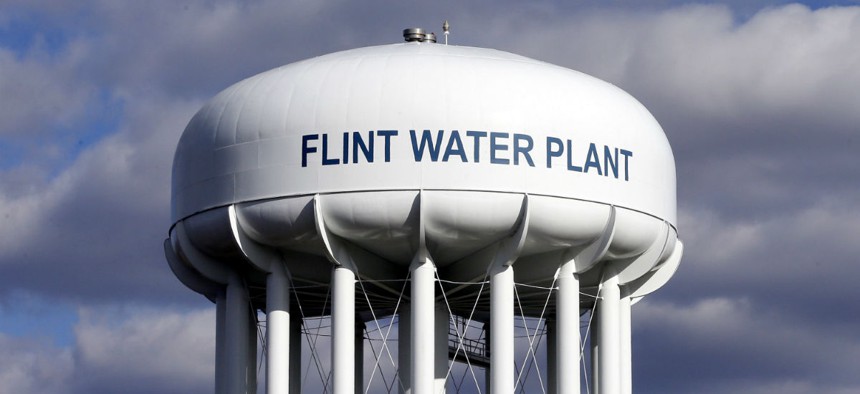
Investigators help prevent public health crises like the one in Flint, Mich. Carlos Osorio/AP file photo
EPA Has Slashed Its Criminal Investigation Division in Half
Cuts, which predate Trump, track with a reduction in new criminal cases brought by EPA.
The Environmental Protection Agency employs about half as many criminal investigators as it did a more than a decade ago, according to newly released documents, corresponding to a dramatic dropoff in the number of new criminal cases against those who violate environmental laws and regulations.
EPA currently has 147 special agents in its Criminal Investigation Division, according to documents obtained through a federal records request by Public Employees for Environmental Responsibility, less than half the number it employed in 2003 and well below the 200-agent floor established by Congress in 1990. The division opened 170 new cases in fiscal 2016, down 47 percent from fiscal 2012. It is on pace to open just 120 cases this fiscal year. Actual convictions have dropped at a similar rate.
The reduction in agents exceeds the workforce declines at EPA agencywide over the last several years. EPA has shed more than 2,500 employees, or about 14 percent of its workforce, since 2010. The agents in the criminal division are white collar workers, generally with backgrounds as attorneys or accountants.
EPA shifted to a new enforcement system called Next Generation Compliance in 2014, which the agency said would ease oversight through electronic reporting and “advanced pollution detection technology.” PEER argued, however, that the technology has led to industry self-reporting and fewer cases for EPA’s criminal division to investigate. Jeff Ruch, PEER’s executive director, said there is no evidence that companies have increased their compliance and cases like Volkswagen misrepresenting the emissions stemming from its vehicles prove stringent regulatory oversight is still necessary. EPA only issued a notice of violation in the Volkswagen case in 2015 after scientists from West Virginia University submitted their own findings to the International Council on Clean Transportation.
New cases related to the 1972 Clean Water Act fell by half between fiscal years 2012 and 2016, while those connected to the 1963 Clean Air Act went down by 60 percent in the same period.
Ruch noted that absent a few “big-ticket items,” such as the Volkswagen case and the 2010 Deepwater Horizon oil spill, recent convictions would be far lower. The agency’s cuts, he said, were not made to save money.
“We’re not talking about a large investment here,” Ruch said. “It’s a political decision.”
He expressed concern the trend, which was accelerated mostly in the Obama administration, would face an even worse fate under President Trump and EPA Administrator Scott Pruitt.
“Pruitt’s known aversion to punishing corporate polluters threatens to hollow out what remains of EPA’s Criminal Investigation Division,” Ruch said.
EPA is in the process of downsizing its workforce. The agency plans to spend $12 million by the end of September to encourage employees to leave through early retirement and buyout offers, and Congress is pushing funding for more separation incentives in fiscal 2018. The Trump administration is also seeking to slash the number of regulations with which private companies must comply, requiring agencies to eliminate or streamline two rules for every new one they introduce and sending task forces across government to identify those no longer necessary.
Still, Ruch predicted if EPA continues to cut employees from CID, public health crises like that seen in Flint, Michigan, will continue to occur.
“Not having any kind of enforcement arm means you’re going to wage the clean water battle with at least one arm tied behind your back,” he said.
An EPA spokeswoman declined to comment.







